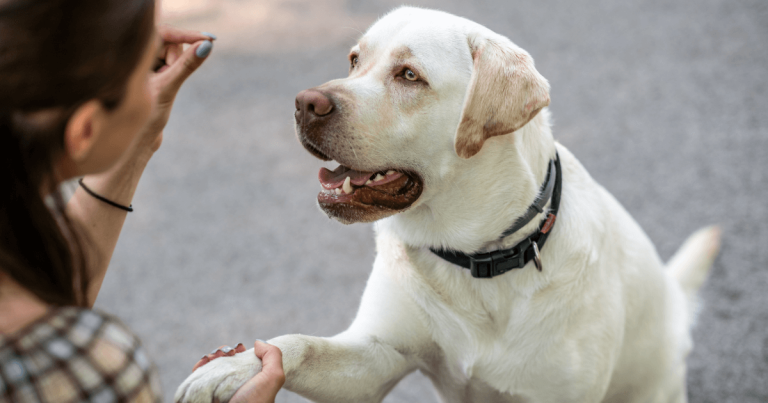10 best ways to stop a dog barking at night
Dog barking is normal, but excessive barking may disturb you, especially at night. If you are struggling to find a solution, how to stop a dog barking at night? Here are 10 effective ways to calm your dog at night. These proven ways helped me to relax my dog, especially at night. Research has shown that about 75% of dog owners get bothered by the barking of their dogs at night while only 49% of dog owners are bothered by the frequent barking of their dogs at day time.
Sounds interesting! Let’s dig into it…
Why does your dog bark at night?
Before going to solve this issue, understand why your dog barks at night. There are many reasons why a dog barking at night. These are,
- Getting your attention
- Loneliness and boredom
- External stimuli
- Alerting you
- Fear and anxiety
- Underlying medical problem
10 best ways to stop a dog barking at night
Here is a list of 10 proven ways to calm your dog at night. These ways helped me a lot to relax my dog.
- Positive reinforcement training for quiet behavior
- Evening walk
- Training session
- Routine bedtime
- White noise or Play classical music
- Provide a comfortable sleeping Area
- Try a new resting Spot
- Use anti-bark devices
- Try calming aids
- Consult a professional
Positive reinforcement training for quiet behavior
It is the best way to improve the behavior of your dog. Ensure your dog is not in distress or danger and stop responding to barking at night. That sounds crazy, but a dog bark to get your attention. By ignoring the barking, you’re essentially showing them it doesn’t get your attention. With time, a dog will learn that barking is ineffective in getting your attention. So, there is no reason for them to continue the barking. Sometimes, barking may get worse to get your attention but stay calm. When a dog responds to a quiet command, celebrate their quiet behavior with rewards like treats or toys. Over time, they’ll associate quiet behavior with positive outcomes,
Tip: Remember, patience is the key. But with consistent training, your dog will learn the magic trick of switching off the bark alarm and becoming a champion of nighttime tranquility.
Evening walk
A tired dog is a quiet dog. An evening walk is beneficial for the physical and mental well-being of your furry friend. This helps release pent-up energy and tension. This physical activity tires your dog leading to deeper sleep at night. A dog gets mentally stimulated by exploring new sights and smells on the way to walk. It also strengthens your bond with your furry friend by spending quality time.
Note: Adjust the length and intensity of the walk according to the dog’s age, breed, and overall body condition. Ensure proper hydration and avoid walks during extreme heat or cold.
Training session
Engage your dog in training sessions to release the pent-up energy. Any sort of physical activity tires a dog. A tired dog has deep sleep at night. Additionally, your dog gets mentally stimulated. It also keeps your dog healthy. By spending some time with your dog, it strengthens your bond with your dog.
Beat boredom with the Toys
Boredom can be a real drag for a dog, leading to destructive behavior in the form of excessive barking. The best solution to beat boredom is to keep your furry friend busy by having a selection of stimulating toys around their sleeping area. Use toys that offer no or less sound. Interactive puzzle toys and Chew Toys for Chewers keep them engaged.
Note: Dogs can get bored with the same toys over time. Regularly rotate their toy collection to keep them interested and engaged. Introduce new toys periodically to spark their curiosity and provide fresh challenges.
Routine bedtime
Set a bedtime routine as did for feeding. Introduce certain rituals before going to bed such as cuddling, brushing, and massage. You also have to gently tell your dog Good Night as it’s time to sleep. Establishing a bedtime routine takes time and consistency. Don’t get discouraged if it doesn’t work perfectly overnight. Be patient, stick to the plan, and celebrate even small improvements in your dog’s nighttime behavior.
Bonus Tip: Create a relaxing atmosphere! Dim the lights, and put on calming music to create a sleep-conducive environment.
White noise or Play classical music
This is extremely helpful if your dog is barking in response to other dogs or external stimuli. White noise can act as a sound barrier and reduce external stimuli that might keep your dog awake. Studies suggest that white noise machines help reduce the cortisol level of a dog and are also beneficial for human sleep. Additionally, white noise can be similar to the sounds they heard in the womb, offering a sense of comfort and security. Studies suggest that gentle melodies and predictable rhythms of classical music can have a calming effect on dogs. Start playing the calming sounds before bedtime during your established routine. Keep the volume low enough that it creates a gentle background ambiance rather than a concert hall experience. Some dogs may respond better to classical music, while others find white noise more comforting. Try out both options and see what works best for your furry friend.
Bonus Tip: Combine calming sounds with other sleep-promoting tactics like a cozy bed, a dimmed room, and a consistent bedtime routine and peaceful sensory environment for maximum effectiveness.
Provide a comfortable sleeping Area
An uncomfortable sleeping area is one of the reasons why a dog bars at night. Providing a secure and comfortable sleeping area keeps your dog relaxed at night. Use soft bedding material. Choose a crate enough for your dog to stand up and turn around comfortably. Line it with soft bedding and a familiar toy. If your dog doesn’t use a crate, provide a comfortable dog bed having soft and supportive padding. Choose a size that allows them to stretch out fully.
Pro tip: Avoid loud noise or any sort of activity near the sleeping area that may create disturbance for your dog.
Try a new resting Spot
If a comfortable sleeping area won’t keep your dog calm at night, then change the location of the resting area. The new area should have minimum distractions. It should not be near doors, windows, or areas with a loud noise. The new area should be the quiet corner of your home, free from distraction and an area where your furry friend feels secure.
Bonus Tip: Instead of moving their bed abruptly. Place it in the new location with familiar bedding and a favorite toy for a few days. Allow them to explore the new spot at their own pace. Reward them with praise or treats when they relax in the new spot. It will associate the new location with a positive experience.
Use anti-bark devices
Bark Collars are specialized collars designed to discourage the barking behavior of a dog. These are available in different forms such as electronic bark collars ( static or vibration bark collars), spray bark collars ( citronella bark collars), and ultrasonic bark collars. The main goal of all types of collars is to distract your dog from barking with minimal disturbance to the dog. However, bark collars are not painful enough as assumed by most people. This a just a way to modify the behaviour of the dog.
Note: Adjust the intensity of distraction according to the dog’s age, breed, and physical condition, or by consulting a professional.
Try calming aids
Calming aids also proved beneficial to relax your furry friend at night. There are several calming aids available in the market to keep your dog calm at night. Consult your vet before using any calming aid for your dog, especially if your dog has any underlying health conditions or takes medications. Calming Chews often contain L-theanine, melatonin, chamomile, or other natural ingredients that may promote relaxation and reduce anxiety. Calming Sprays use calming pheromones, which mimic the natural calming signals produced by mother dogs. These can be sprayed on your dog’s bedding or around their designated sleeping area to create a sense of security.
Tip: By combining calming aids with other strategies like exercise, consistent routines, and positive reinforcement training, you can create a peaceful sleep environment for yourself and your furry friend.
Make an appointment with a dog Trainer
If you don’t see any progress after working hard on your dog, consult with a professional. Consult with your Vet. to rule out underlying any medical condition. You may want to consult a behavioral trainer for your dog. This man first understands the behavior of your dog and then gives one-on-one training to your dog to keep him calm at night.
Conclusion
In short, there are many reasons why a dog barks at night, and several solutions to address this behavior. You can create a peaceful sleep environment for yourself and your furry friend by implementing these proven ways. Remember, consistency and positive reinforcement are key elements in modifying your dog’s behavior. With dedication and sincere efforts, you can relax your dog and enjoy restful nights.





